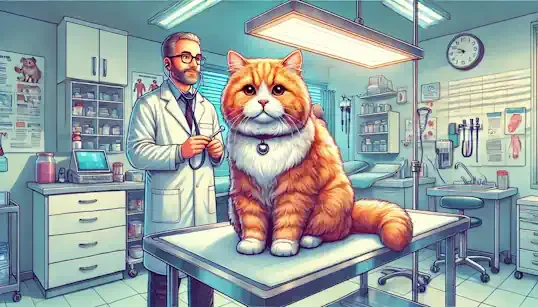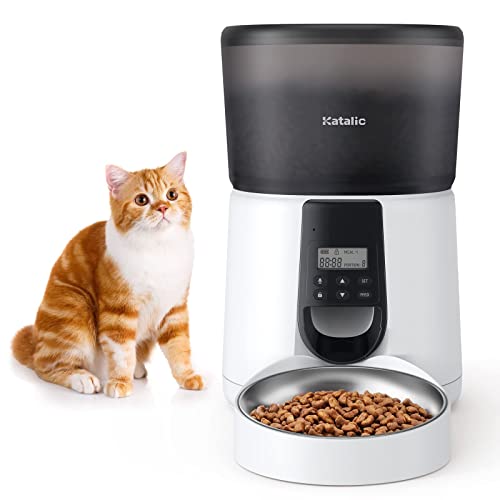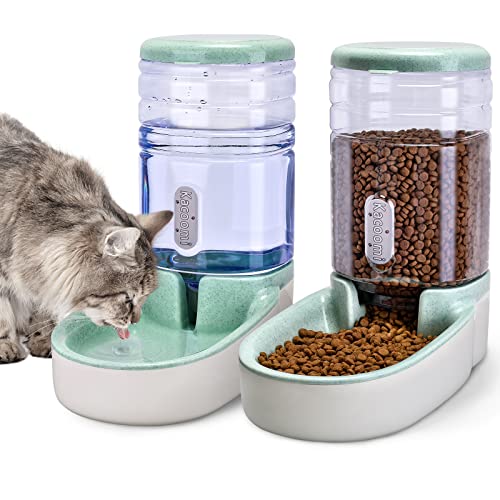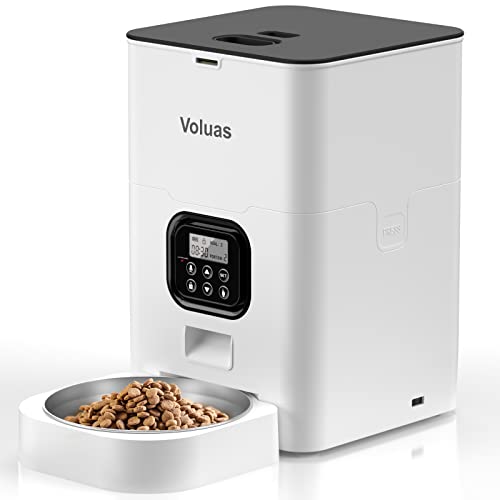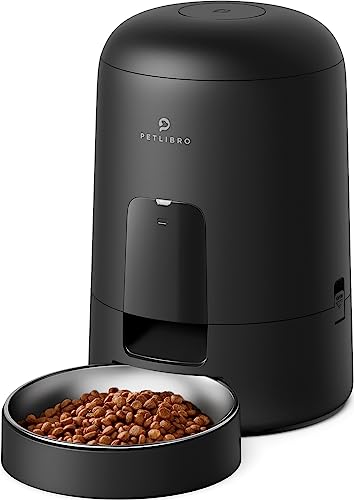Is your cat acting a little off? Perhaps they’re sleeping more than usual, or maybe they’ve lost interest in their favorite toy. We adore our cats for their independent nature, their quiet companionship, and the subtle ways they weave themselves into our lives. But this very independence, this feline stoicism, can sometimes be their greatest vulnerability, especially when it comes to their health. Cats are masters of disguise, experts at concealing pain and illness. This inherent trait, developed over millennia as both predator and prey, makes it incredibly challenging for even the most attentive owner to detect early signs of trouble. A slight change in appetite might be dismissed as pickiness, a bit more napping might be attributed to a relaxing day in the sun. Yet, these subtle shifts can be the whispers of a more serious health concern, a quiet plea for attention that goes unheard until the problem escalates.
The consequences of delayed veterinary care for our feline companions can be significant and sometimes heartbreaking. Conditions that are easily treatable in their early stages can become chronic, complex, and even life-threatening if left unchecked. A simple urinary tract infection, if ignored, can progress to kidney damage. Dental disease, incredibly prevalent in cats and often overlooked, can lead to systemic infections and impact overall health. What starts as a manageable issue can quickly spiral into an emergency situation, placing both your beloved cat’s well-being and your resources under considerable strain. This is why understanding when to bring your cat to the vet is not just about responsible pet ownership, it's about proactive prevention. It's about recognizing the critical moments and situations that necessitate professional veterinary attention, and about prioritizing preventative care to safeguard your cat’s health and happiness for years to come. This article is designed to be your guide, illuminating the path to proactive feline healthcare, helping you discern the subtle signals your cat might be sending, and empowering you to make informed decisions that can truly prevent serious problems and ensure a long, healthy, and fulfilling life for your cherished feline friend.
The foundation of responsible cat ownership, and indeed the cornerstone of preventative veterinary care, rests upon the establishment of routine wellness exams. These proactive vet visits are not just about administering vaccinations; they are comprehensive health assessments tailored to your cat's age and life stage, designed to catch potential problems before they become significant issues. From the energetic exuberance of kittenhood to the dignified grace of their senior years, your cat's healthcare needs will evolve, and regular check-ups are crucial to adapt to these changing requirements.
Kittenhood, that whirlwind of playful paws and boundless curiosity, is a critical period for establishing a strong health foundation. The initial series of veterinary visits during these early months are paramount. Vaccinations are key, protecting your young feline from potentially devastating and highly contagious diseases such as feline distemper, feline calicivirus, and feline herpesvirus. These core vaccines, often administered in a series of boosters, build a robust immune system, offering vital protection during their most vulnerable period. Parasite prevention is equally important. Kittens are susceptible to internal parasites like roundworms and hookworms, often acquired from their mothers, and external parasites like fleas and mites. Early veterinary visits will ensure appropriate deworming and parasite control strategies are implemented, safeguarding your kitten’s health and preventing transmission to other pets or even humans. Furthermore, these initial visits establish a vital health baseline. Your veterinarian will conduct a thorough physical examination, checking everything from heart and lung sounds to eye and ear health, documenting your kitten's initial condition and identifying any congenital issues early on. This early assessment is crucial for establishing a benchmark against which future health changes can be measured.
As your kitten matures into adulthood, annual wellness exams remain essential. While the frequency of vaccinations may decrease based on your veterinarian’s recommendations and vaccine protocols, the importance of yearly check-ups does not diminish. Adulthood is the time to reinforce the preventative measures established in kittenhood and to monitor for the subtle onset of age-related conditions. Vaccinations will continue to play a role, often with booster shots for core vaccines and potentially lifestyle-based vaccines depending on your cat’s risk factors. Parasite control remains a year-round commitment, protecting against fleas, ticks, heartworms, and intestinal parasites. Dental checks become increasingly critical in adulthood. Dental disease is incredibly common in cats, with many developing periodontal disease by just a few years of age. Annual veterinary dental exams are crucial to detect early signs of gingivitis or periodontitis, allowing for timely intervention before more serious dental issues and systemic health problems arise. Beyond these specifics, adult wellness exams encompass a comprehensive overall health assessment, including weight monitoring, nutritional counseling, and discussions about behavioral changes or concerns you might have observed.
The senior years, marked by a slowing pace and a quieter demeanor, necessitate an even greater focus on proactive veterinary care. As cats age, they become more susceptible to a range of age-related diseases, including kidney disease, arthritis, hyperthyroidism, and diabetes. For senior cats, typically defined as cats over the age of seven, increasing the frequency of wellness exams to bi-annual visits, or even more often as recommended by your veterinarian, becomes paramount. These more frequent check-ups allow for closer monitoring for the early signs of these age-related conditions. Senior wellness exams are often more comprehensive, potentially including bloodwork and urine tests to screen for organ function and metabolic disorders. Pain management becomes a significant consideration in senior cats, as arthritis and other age-related conditions can cause chronic pain that cats often hide effectively. Veterinary exams will assess for signs of pain and discomfort, allowing for the implementation of appropriate pain management strategies to maintain quality of life. Finally, quality of life assessments become a vital part of senior cat care. As cats age, discussions with your veterinarian about their overall well-being, their comfort levels, and how to ensure their remaining years are as happy and fulfilling as possible become essential.
Beyond routine wellness exams, vaccinations and parasite prevention form another crucial pillar of preventative care. Vaccinations protect your cat from serious, contagious, and sometimes fatal diseases. Core vaccines, typically recommended for all cats regardless of lifestyle, include those protecting against feline panleukopenia (distemper), feline calicivirus, and feline herpesvirus. Your veterinarian can advise you on the appropriate vaccination schedule and whether lifestyle-based vaccines, such as the feline leukemia virus vaccine, are recommended for your individual cat based on their risk factors. Parasite prevention is not just about protecting your cat from itchy fleas. Fleas can transmit diseases, ticks can carry Lyme disease and other debilitating illnesses, heartworms are a potentially fatal parasite transmitted by mosquitoes, and intestinal worms can compromise your cat’s digestive health and overall well-being. Year-round parasite prevention, using veterinarian-recommended products, is crucial to safeguard your cat from these threats and protect both their health and your family’s.
Dental health is frequently underestimated yet profoundly impactful on a cat's overall well-being. Dental disease is incredibly common in cats, with periodontal disease affecting a significant majority of cats by middle age. Regular dental checks, ideally during each wellness exam, are essential for early detection of dental issues. Professional dental cleanings under anesthesia, performed as recommended by your veterinarian, are often necessary to remove tartar and plaque buildup below the gum line, preventing the progression of periodontal disease. Home dental care, such as regular tooth brushing with cat-specific toothpaste and dental chews or diets, can also play a crucial role in maintaining your cat’s oral health between professional cleanings.
Finally, nutrition and weight management are integral to preventative care. A balanced, high-quality diet appropriate for your cat's age, lifestyle, and health needs is fundamental for maintaining optimal health. Obesity is a prevalent issue in cats, contributing to a range of health problems, including diabetes, arthritis, and heart disease. Your veterinarian can provide guidance on appropriate portion sizes, dietary choices, and weight management strategies to ensure your cat maintains a healthy weight throughout their life. Proper nutrition and weight management are not just about aesthetics; they are vital components of preventative care, contributing to a longer, healthier, and more active life for your feline companion.
While proactive preventative care lays the groundwork for a healthy life, recognizing when reactive veterinary care is necessary is equally crucial. This involves being attuned to your cat's normal behavior and health and identifying deviations that warrant prompt veterinary attention. These “when to bring your cat to the vet” moments often manifest as changes in behavior or physical symptoms that signal an underlying health issue.
Sudden changes in your cat's behavior or demeanor should always raise a red flag. Lethargy and weakness, characterized by unusual tiredness, lack of energy, and a tendency to hide or withdraw, are often early indicators of illness. While cats naturally enjoy napping, a noticeable decrease in activity levels and a reluctance to engage in their usual routines should not be ignored. Changes in appetite or thirst, whether it's a sudden refusal to eat or drink, or conversely, excessive thirst, can be indicative of various underlying health issues, ranging from dental problems to kidney disease or diabetes. Vocalization changes, such as excessive meowing, unusual crying, or hissing (if it's not typical for your cat), can be expressions of pain, discomfort, or distress. Hiding or isolation, becoming more reclusive than usual, can be a sign that your cat is feeling unwell or is trying to cope with pain or discomfort by withdrawing from interaction. Any sudden and unexplained shifts in your cat’s typical behavior pattern deserve careful observation and, if persistent, a veterinary consultation.
Physical symptoms are often more overt indicators that your cat needs veterinary attention. Gastrointestinal issues, such as vomiting, diarrhea, or constipation, especially if persistent, bloody, or accompanied by other symptoms like lethargy or loss of appetite, warrant veterinary assessment. Respiratory issues, including coughing, sneezing, wheezing, rapid or labored breathing, and nasal discharge, can signal respiratory infections, allergies, or even more serious conditions like pneumonia or asthma. Urinary issues are particularly critical, especially in male cats, as urinary blockages can be life-threatening emergencies. Straining to urinate, urinating outside the litter box (especially if this is a new behavior), blood in the urine, and increased urination are all signs that require immediate veterinary attention. Skin and coat changes, such as hair loss, excessive scratching, lumps, bumps, skin lesions, or a foul odor, can indicate skin infections, allergies, parasites, or underlying systemic diseases. Eye and ear problems, like discharge, redness, swelling, squinting, head shaking, or excessive scratching at the ears, can signal infections, injuries, or other ophthalmologic or aural issues that need veterinary treatment. Mobility issues, including limping, stiffness, reluctance to jump or move, or a change in gait, are often indicative of pain, arthritis, injuries, or neurological problems that necessitate veterinary evaluation. Finally, changes in grooming habits, either neglecting grooming altogether or over-grooming in specific areas, can be subtle signs of underlying health issues, stress, or pain.
Beyond these general signs and symptoms, certain specific situations demand immediate veterinary attention, often constituting emergencies. Trauma or injury, such as falls, car accidents, animal bites, or wounds, always require prompt veterinary assessment to address injuries, manage pain, and prevent infection. Suspected toxin ingestion, whether it's household cleaners, medications, toxic plants, antifreeze, or other potentially poisonous substances, is a critical emergency requiring immediate veterinary intervention to induce vomiting, administer antidotes, and provide supportive care. Difficulty breathing or gasping for air is an absolute emergency, signaling severe respiratory distress that requires immediate veterinary treatment to ensure adequate oxygenation. Seizures or collapse, sudden loss of consciousness or uncontrolled muscle activity, are neurological emergencies that necessitate immediate veterinary care to diagnose the underlying cause and provide appropriate treatment. Eye injury or sudden blindness, whether due to trauma, infection, or other causes, requires urgent veterinary attention to preserve vision and address any underlying eye conditions. A bloated or distended abdomen, particularly if accompanied by pain or vomiting, can be a sign of a life-threatening condition like gastric dilation-volvulus (bloat) or internal organ rupture, requiring immediate veterinary surgical intervention. Finally, obvious signs of pain, such as whining, crying, or aggression when touched in certain areas, especially if sudden and severe, warrant immediate veterinary assessment to identify the source of pain and provide pain relief.
In navigating these various signs and symptoms, it's crucial to remember the adage "better safe than sorry." You, as the cat owner, are the primary observer of your feline companion's normal behavior and health. You know your cat best, and your instincts are invaluable. Emphasize the importance of trusting your intuition. If something just doesn't seem quite right, even if you can't pinpoint a specific symptom, it's always better to err on the side of caution and consult with your veterinarian. Veterinarians would far rather address a minor concern early on than have a treatable condition escalate into a serious emergency. Don't hesitate to call your vet's office if you are unsure whether a vet visit is necessary. They can provide guidance over the phone, assess your cat's symptoms based on your description, and advise you on the appropriate course of action. While online resources can be helpful for general information, it's crucial to caution against relying solely on "Dr. Google" for diagnosis. Self-diagnosing your cat's condition based on internet searches can lead to misdiagnosis, delayed treatment, and potentially serious consequences. Online information should supplement, not replace, professional veterinary advice. When in doubt, always choose the peace of mind that comes with professional veterinary assessment.
Preparing for a vet visit, especially for a cat who is not a fan of car rides or veterinary clinics, can significantly reduce stress for both you and your feline friend. Cat carrier acclimation is a crucial step. Transform the carrier from a dreaded box into a comfortable and familiar space. Leave the carrier out in a commonly used area of your home, make it inviting with soft bedding, and occasionally place treats or toys inside. Gradually associate the carrier with positive experiences, allowing your cat to explore it at their own pace and view it as a safe haven rather than a harbinger of unpleasant events. Calm and gentle handling during transport is equally important. Approach your cat calmly and speak to them in a soothing voice. Pick them up gently and confidently, supporting their body securely, and place them into the carrier rear-end first. Secure the carrier door firmly and carry it smoothly and steadily, avoiding sudden movements or jostling. Covering the carrier with a towel or blanket can help reduce visual stimuli and create a more secure and calming environment for your cat during transport.
Before you head to the vet, take a moment to gather information to bring with you. Make a list of any medications your cat is currently taking, including dosages and frequency. Be prepared to describe your cat’s diet, including the type of food they eat, portion sizes, and feeding schedule. Note down any recent behavioral changes you’ve observed, even seemingly minor ones. Specifically list the symptoms you’ve noticed that prompted the vet visit, including when they started, how often they occur, and any factors that seem to worsen or improve them. Finally, prepare a list of questions to ask your veterinarian. Don't be shy about asking for clarification on anything you don't understand. Example questions might include: "What is the likely diagnosis?", "What are the treatment options?", "What is the prognosis?", "Are there any preventative measures I can take in the future?", or "What are the potential side effects of the recommended treatments?". Proactive communication and asking informed questions will empower you to be a better advocate for your cat’s health and ensure you leave the vet’s office with a clear understanding of the diagnosis, treatment plan, and follow-up care.
In conclusion, the journey of cat ownership is one filled with joy, companionship, and a deep bond that enriches our lives immeasurably. But with this joy comes the responsibility of ensuring our feline friends remain healthy and happy throughout their lives. Early detection and preventative care are not just best practices; they are the cornerstones of a long and healthy life for your cat. By being proactive pet owners, by prioritizing routine wellness exams, by being attuned to subtle changes in their behavior and health, and by acting promptly when concerns arise, you play a vital role in safeguarding your cat's well-being. Empower yourself with knowledge, trust your instincts, and never hesitate to seek professional veterinary advice when you have any concerns about your cat's health. Schedule that wellness exam, observe your cat closely, and reach out to your vet if anything feels amiss. By taking these proactive steps, you are not only preventing serious problems but also reaffirming your commitment to the precious bond you share with your feline companion, ensuring they enjoy a long, comfortable, and love-filled life by your side.
